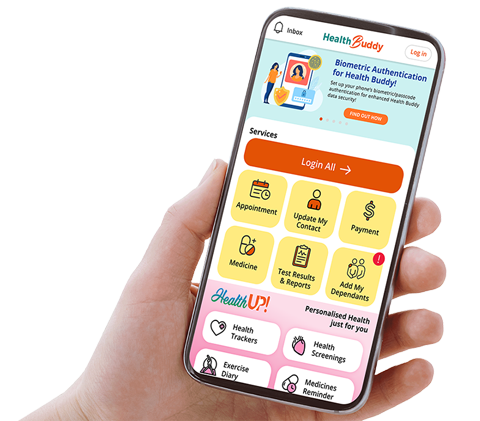KK Women's and Children's Hospital will NEVER ask you to transfer money over a call. If in doubt, call the 24/7 ScamShield helpline at 1799, or visit the ScamShield website at www.scamshield.gov.sg.
Vomiting - Causes and Risk Factors
Causes of Vomiting
Most vomiting is caused by a viral infection of the lining of the stomach or by food poisoning. Often, a child who is vomiting may also develop diarrhoea.
Occasionally, the vomiting may be caused by a more serious illness, such as intestinal obstruction (blockage of the bowels), which will require surgical attention. If the vomiting is associated with severe headache, infection of the brain or a bleed or growth in the brain may be possible causes.
Expected Course
The vomiting usually stops in 6 to 24 hours. Changes in the diet usually speed recovery. If your child has diarrhoea, it will often continue for several days.
Home Care For Vomiting
- Offer small amounts of clear fluid for 8 hours (no solid food): Offer clear fluids in small amounts until 8 hours have passed without vomiting. You can offer glucose water, barley, rice water or oral re-hydration solution such as Pedialyte. Avoid giving just plain water alone. Start with 1 teaspoon to 1 tablespoon of the clear fluid, depending on your child's age, every 5 minutes (or 15 to 30 ml every 15 minutes). After 4 hours without vomiting, double the amount each hour. If your child vomits using this treatment, rest the stomach complete for 1 hour and then start over but with a smaller amount.
- Offer bland foods after 8 hours without vomiting: For older children, they can start on porridge, bread, biscuits, bland soups or mashed potatoes. For infants, they can start on milk feeds, but give 1 or 2 ounces less per feed than usual. Usually, your child can be back on a normal diet within 24 hours after recovery from vomiting.
- Diet for breast-fed babies: Provide breast milk in smaller amounts than usual. Nurse on only 1 side for 5 minutes every 30 to 60 minutes. If there is no more vomiting for 8 hours, return to normal nursing on both sides.
Consult A Doctor Immediately If
- Your child shows any signs of dehydration (such as no urine for more than 8 hours, dry mouth, no tears when crying)
- The vomitus is bloody or greenish in colour
- Your child starts acting very sick
- The vomiting is persistent, that is, unable to tolerate a small amount of fluid at frequent intervals.
- Your child complains of persistent abdominal pain or severe headache
- Your child appears pale or lethargic
- There is painful swelling of the abdomen
The information provided is not intended as medical advice. Terms of use. Information provided by SingHealth.
Our Medical Specialists
- Clinical Designations(s)
- Clinical Interests(s)
Stay Healthy With
© 2025 SingHealth Group. All Rights Reserved.
















